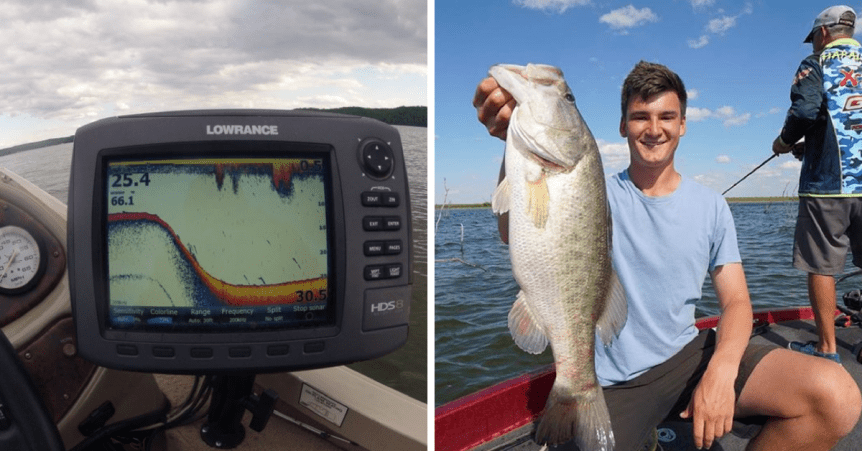Finding Bass: Locating Fish With and Without Electronics[print_link]
Finding bass after the spawn is a popular technique for anyone looking to catch a pile of fish. After the spawn, bass across much of the country will start their annual migration offshore. The warming shallow waters cause baitfish to head offshore, and the bass follow.
Finding and catching deep bass isn’t always easy, but it’s often some of the most rewarding fishing of the year because once you do find them, it can be lights out.
Obviously, finding and catching deep bass is a little easier with the space age electronics found on many bass boats, but it’s not the only way. You can still effectively target and catch offshore bass even if you’re in a boat with no electronics.
Here’s a breakdown on how to do it each way.
Finding Bass With Electronics
With today’s electronics, the learning curve for catching deep bass is a lot shallower than it used to be. The first step is to pull up your map and locate likely areas. Top producing offshore locations to find deep bass include; humps, points, ledges, saddles, and bluff walls. Once you’ve identified several on the map, go out and idle them with side imaging, and conventional sonar while looking for both cover, and bass.
Typically, you won’t want to fish until you at least see something that stands out from the rest. It may be an abundance of cover, like brush or rocks. Even better, you may actually be able to see the bass on your graph, indicating that it’s a good place to fish. Once you’ve located the bass, back off and fish them with your favorite deep technique.
Finding Bass Without Electronics
Interestingly, the approach without electronics is very much the same; you’re just doing it with a little less precision. It’s possible to still get paper maps of most of the major water-bodies in the country. If you can, make sure you get one. Spend some time identifying likely spots (humps, points, ledges, roadbeds, etc.) and mark them up on the map. Once you’re on the water, start at one end of the lake and fish each and every spot you marked until you bump into some fish.
Without electronics to tell you whether bass are present or not, it’s important to maintain efficiency. Employ a two-pronged approach by which you start out with a power-fishing technique like a crankbait, and thoroughly saturate the area. If you don’t get bit within 10 minutes, make a few casts through with a bottom bait like a football jig or worm to ensure there are no stragglers – and if you’re still hauling water then pick up and move on.


